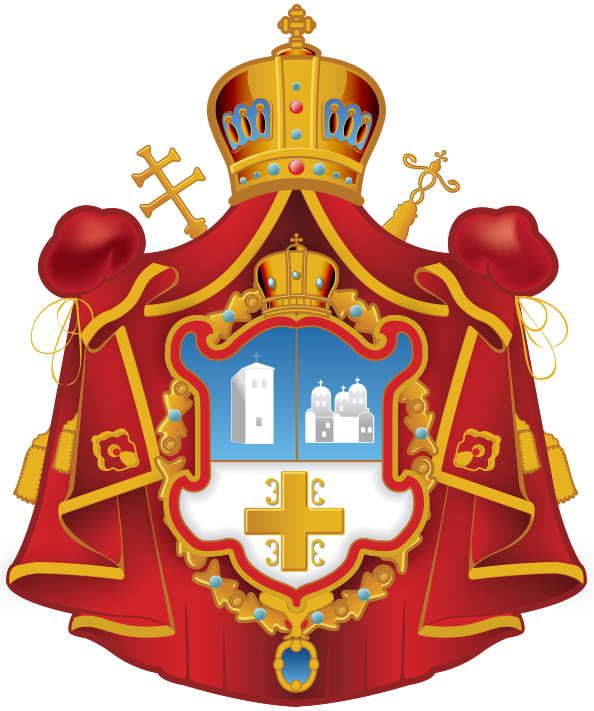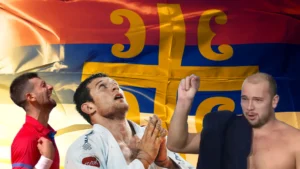Verses 3 and 4 state: “Judah begot Perez and Zerah by Tamar. Perez begot Herzon, and Herzon begot Ram. Ram begot Amminadab, Amminadab begot Nahshon, and Nahshon begot Salmon.”
Here, the Apostle Matthew mentions Judah and Tamar, who was Judah’s daughter-in-law and bore children with him, her father-in-law. Tamar was initially married to Er, one of Judah’s sons. When Er died without progeny, Judah, following the Levirate law, gave his daughter-in-law Tamar to his younger son, Onan. After Onan was struck dead for his sin, which later became known as “onanism” (Genesis 38:8-10), Judah decided against giving Tamar to his third son, fearing he too would suffer the fate of his older brothers if he took her as a wife. Before discussing why their children are mentioned, it’s important to note that St. John Chrysostom draws attention to the fact that the Apostle Matthew deliberately includes this event, which might cause many to be outraged.
Chrysostom goes no to say: “What are you doing, oh divinely inspired Matthew, by telling us about this sinful union? (between the father-in-law and daughter-in-law). ‘So what?’, he would reply. If we were dealing with the genealogy of just anybody, it would be wise to omit such a matter. However, in the genealogy of the incarnate God, it is not only inadvisable to leave it out, but it would indeed be essential to proclaim it loudly, in order to demonstrate His power and the depth of His Providence. He came not to shun our shame, but to destroy it”. Perez and Zerah, the children of Judah and Tamar have a kind of mystery inside of them.
Blessed Theophylact explains it this way: “When Tamar was about to give birth, the first child put out his hand from the womb, as if he would come out first. The midwife immediately marked the extended hand with a red cord to identify the firstborn. But the child immediately withdrew his hand back into the womb, and the second child was born first, while the one who stretched out his hand came out after him. Therefore, the one who was born first was named Perez, which means “breach”, because he breached the natural order, while the second child, who withdrew his hand, was named Zerah. This story points to some kind of a mystery. Just as Zerah first stretched out his hand but then pulled it back, so the life in Christ first appeared in those saints who lived before the Law and circumcision, for they were justified not by keeping the Law and commandments but by living the Gospel life. Look at Abraham, who left his father and home for the sake of God and even renounced his human nature (here Theophylact refers to Abraham’s obedience to God in his willingness to sacrifice his son Isaac). Look at Job and Melchizedek! (Genesis 14:18-20). When the Law came, such a way of life disappeared. But just as after Perez’s birth Zerah reappeared, so after the Law, the Gospel life shone again, sealed with the ‘red cord’ that is, by the blood of Christ. This is why the evangelist mentions these two children, since their birth signified something mysterious. Moreover, even though Tamar, as we see, is not worthy of praise for her physical union with her father-in-law, the evangelist includes her to show that Christ, by taking on the entirety of our human nature, took on such ancestors as well. Or, more precisely, He did so in order to sanctify them by being born of them, for He did not come to call the righteous, but sinners.”
The names mentioned in these verses also represent the generations of Israelites who spent their entire lives in Egyptian slavery. According to tradition (cited by Fr. Daniel Sysoev), Nahshon was the first Israelite to step into the dry seabed, when the Red Sea was parted by the prophet Moses. The Israelites looked on in amazement, as he took the first step. This is why there is an expression “Nahshon’s leap”, meaning a leap of faith, an act of trust in God. His son, Salmon, was one of the Israelite spies sent to scout the land of Canaan and the city of Jericho.
Verses 5 and 6 state: “Salmon begot Boaz by Rahab, Boaz begot Obed by Ruth, Obed begot Jesse, and Jesse begot David the king. David the king begot Solomon by her who had been the wife of Uriah.”
In the genealogy, four women are mentioned, only one of whom was righteous. Again, this is to show that Jesus, who descended from such people, came because of the sinners, in order to destroy sin. We have already seen Tamar. What about the other women mentioned? Rahab was a ritual prostitute. She sheltered the Israelite spies, who scouted the land before the Israelites attacked the city of Jericho. The Holy Fathers say she was a foreshadowing of the Gentile nations, for just as she received the spies of Israel into her home, so did the Gentiles receive Jesus’ ‘spies’, the apostles, and came to believe their preaching. Ruth was a Moabite, a member of a nation hostile to Israel. She left her people to live with her mother-in-law and care for her in her old age. Her life also prefigures future events, for as Blessed Theophylact says: “Ruth was a foreigner, but she married Boaz. Likewise, the Church among the Gentiles, being a stranger and outside the covenant, forgot her people, the worship of idols, and her father, the devil, and became betrothed to the Son of God.” Thus, the Christians among the Gentiles, like Ruth, abandoned their customs and pagan life in order to enter into communion with God. Ruth later became the great-grandmother of King David. We all know the story of Uriah’s wife, Bathsheba, with whom David committed adultery, and then compounded his sin by having her husband, Uriah, killed. When he repented of his sin, David composed the famous 50th Psalm, which we recite in our daily prayers: “Have mercy on me, O God, according to your lovingkindness.” And from their union, the wise King Solomon was later born, whom God entrusted with the building of the Temple in Jerusalem. Solomon’s writings also became part of the Holy Scriptures.
Verses 7-10: “Solomon begot Rehoboam, Rehoboam begot Abijah, Abijah begot Asa, Asa begot Jehoshaphat, Jehoshaphat begot Joram, Joram begot Uzziah, Uzziah begot Jotham, Jotham begot Ahaz, Ahaz begot Hezekiah, Hezekiah begot Manasseh, Manasseh begot Amon, and Amon begot Josiah.”
The Holy Fathers point out that the genealogy of Christ does not include all of His ancestors. Specifically, three kings are omitted: Jehoahaz, Joash, and Amaziah. They are the direct descendants of King Joram. However, the Apostle Matthew leaves them out, listing only Uzziah as Joram’s descendant. The reason for this lies in the fact that these kings allowed themselves to intermarry with the Israelite king Ahab and Queen Jezebel, who were cursed by the Lord. Ahab was the king who married the godless Jezebel, daughter of the king of Sidon, who initiated the persecution of the prophets of God, especially seeking to kill the prophet Elijah. She worshipped the idol Baal and led her husband Ahab into this godlessness, and through him, almost the entire state of Israel. This is why the prophet Elijah went out into the desert, while God punished the Israelites, by holding back the rain for three-and-a-half years.
Blessed Jerome of Stridon says that due to their connection with Jezebel, these three kings were omitted. He states: “Her lineage is omitted until the third generation, so that they would not be included among those who participated in the sacred Birth.”
Uzziah was a king who followed the Lord, but he dared to burn incense before the Lord, entering the Temple to do so, even though it was permitted only to the priests. For this, the Lord punished him with leprosy. This shows how the Lord views any attempts at performing priestly duties by those not officially ordained to the priesthood, as is the case with schismatics, for example. In the genealogy, Manasseh is also mentioned, the son of king Hezekiah, one of the most pious kings of Judah. King Hezekiah was healed from his illness by the prophet Isaiah, and his life was extended by 15 years. During his reign, the Lord sent an angel to strike down 185,000 soldiers of the Assyrian king Sennacherib, who dared to blaspheme against the Lord and to equate Him with the idols of the surrounding nations.
Manasseh, in contrast to his father Hezekiah, was one of the most godless kings in the history of the Israelites. Scripture says of him: “He caused his sons to pass through the fire of the Valley of the Son of Hinnom, practiced soothsaying, used witchcraft and sorcery, consulted spirits and mediums, and did much evil in the sight of the Lord, provoking Him to anger. He even placed a carved image he had made in the house of God. .. Manasseh led Judah and Jerusalem astray, causing them to do worse than the nations whom the Lord had destroyed before the children of Israel. .” (2 Chronicles 33:6-9). However, it must be said that when God’s punishment came, Manasseh repented so profoundly that his penitential prayer was included in the Church’s liturgical services, in the service of Great Compline. This serves as the criterion by which we can understand why some of Christ’s ancestors by flesh are included in the genealogy, and others are not. Some repented of their deeds, like Manasseh and Uzziah, while others remained on the path of godlessness until the end, and therefore were excluded from the genealogy, like the three aforementioned kings. This is the main criterion. As we can see, the Lord accepted Rahab and Ruth from the Gentile nations as His foremothers, but He excluded godless kings who were by flesh in the line of His ancestors. The Lord looks solely at our hearts. I believe this can also be an answer to the comments that were often heard until recently about people who were once communists and atheists but later repented. Their turning to God was often met with remarks like, “Yesterday in the Communist Party, now suddenly a believer in God.” The right response to this would be, “And thank God for that!” St. John Chrysostom further comments on this topic: “If even a harlot, once she changes, is not shamed for her former conduct, how much more is a virtuous man, even if born of a harlot or an adulteress, not shamed because of the sinful life of his parents?” He concludes: “From the very beginning, Christ shows that He is not revulsed by anything about us, teaching us, in this way, not to be ashamed of the sinfulness of our ancestors, but to seek only one thing – virtue. A man who has virtue, even if he comes from another nation, or is born of a harlot, or some other sinner, will suffer no harm because of it.”
Compiled by Stanoje Stanković, based on the interpretations of the Holy Fathers





